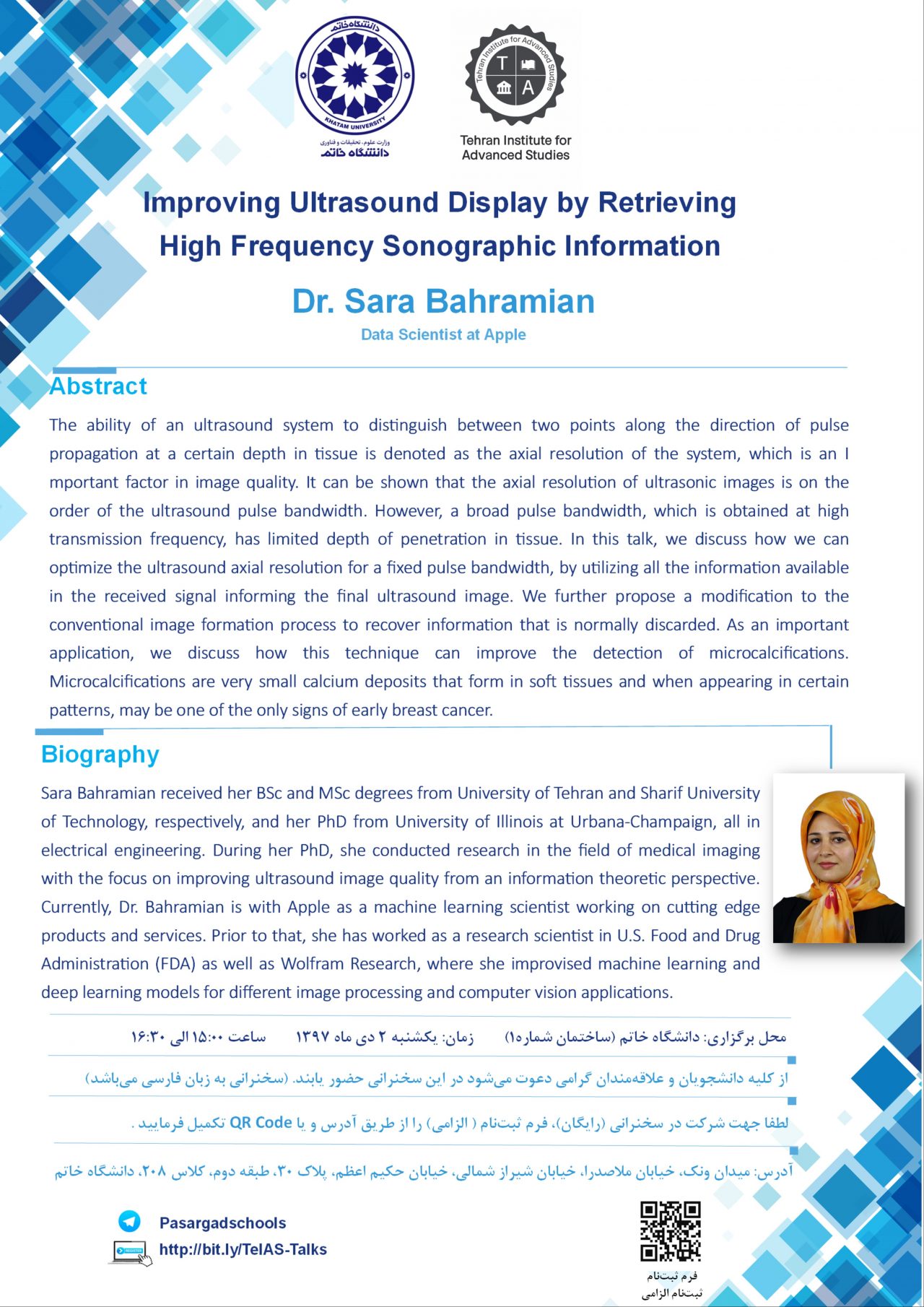
Khatam University, Building No2.
Address: Mollasadra Blvd., North Shirazi St., East Daneshvar St., No.17.
See location on Google map
Dr. Sara Bahramian
Data Scientist at Apple
Overview
The ability of an ultrasound system to distinguish between two points along the direction of pulse propagation at a certain depth in tissue is denoted as the axial resolution of the system, which is an important factor in image quality. It can be shown that the axial resolution of ultrasonic images is on the order of the ultrasound pulse bandwidth. However, a broad pulse bandwidth, which is obtained at high transmission frequency, has limited depth of penetration in tissue. In this talk, we discuss how we can optimize the ultrasound axial resolution for a fixed pulse bandwidth, by utilizing all the information available in the received signal informing the final ultrasound image. We further propose a modification to the conventional image formation process to recover information that is normally discarded. As an important application, we discuss how this technique can improve the detection of microcalcifications. Microcalcifications are very small calcium deposits that form in soft tissues and when appearing in certain patterns, may be one of the only signs of early breast cancer.
Biography
Sara Bahramian received her BSc and MSc degrees from University of Tehran and Sharif Universiy of Technology, respectively, and her PhD from University of Illinois at Urbana-Champaign, all in electrical engineering. During her PhD, she conducted research in the field of medical imaging with the focus on improving ultrasound image quality from an information theoretic perspective. Currently, Dr. Bahramian is with Apple as a machine learning scientist working on cutting edge products and services. Prior to that, she has worked as a research scientist in U.S. Food and Drug Administration (FDA) as well as Wolfram Research, where she improvised machine learning and deep learning models for different image processing and computer vision applications.
